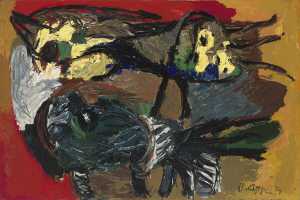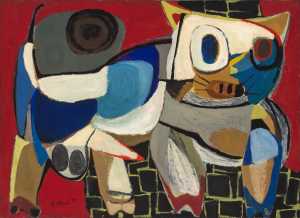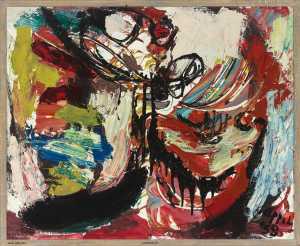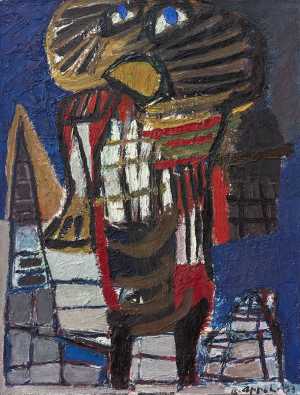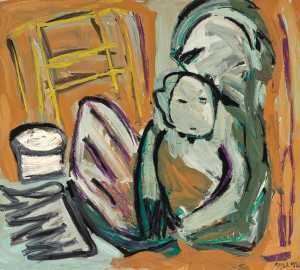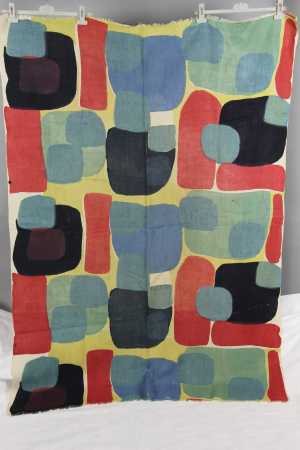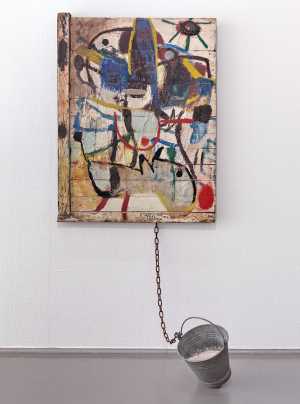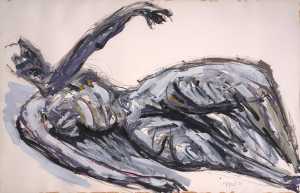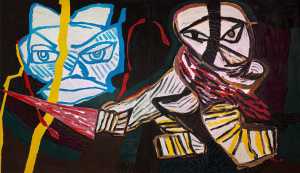Karel Appel was given a painting set by his uncle when he was fifteen and was encouraged to paint. He studied at the Rijksacademie [National Academy] in Amsterdam from 1940 to 1943. Paintings from his early period are inspired by the work of George Breitner. During the Second World War, Appel began to paint more espressively, influenced by Van Gogh and the German expressionists and later by Matisse and Picasso. In 1948, Appel was, together with Corneille, one of the founders of CoBrA (Copenhagen, Brussels and Amsterdam). The paintings by this group are characterised by simple, spontaneous, expressive shapes and bright colour inspired by children's drawing and primitive art. After CoBAa fell apart, Appel began to work with thicker paint and his work seems wilder.
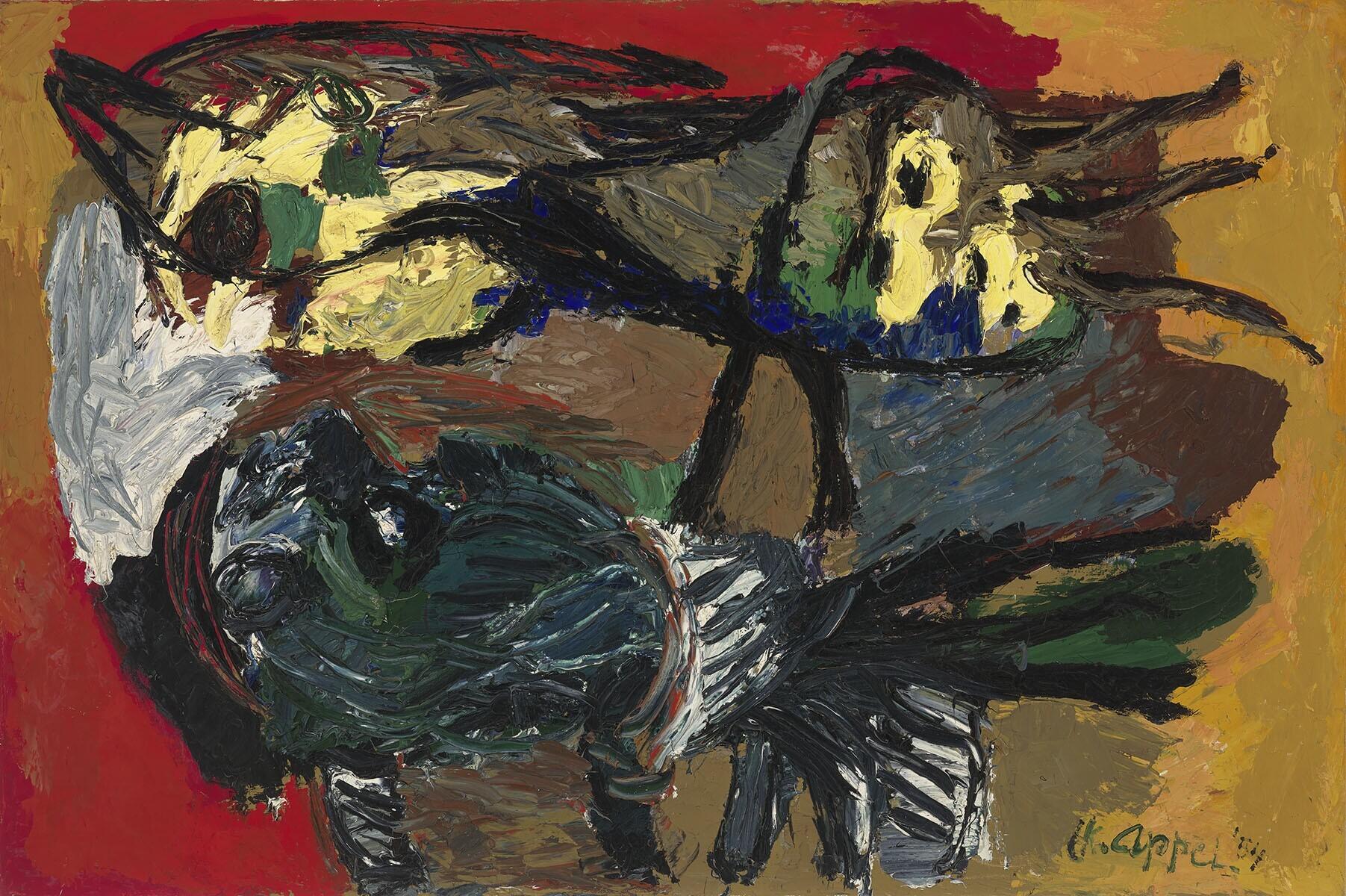
Karel Appel
Amsterdam 1921 - Zürich 2006


